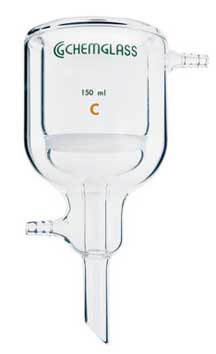| The Home page of ILPI's Safety Data Sheet (SDS) Resource, the leader in SDS information since 1995! | |
| The history and philosophy behind this resource. | |
| A curated collection of books and reference materials concerning Safety Data Sheets and closely related topics. | |
| Paste your plain text SDS into the SDS-Demystifier, and it will be converted into a hypertext-enriched document with links to detailed explanations of each key term. | |
| An extensive list of frequently asked questions about Safety Data Sheets including regulations, content, compliance, and more. | |
| A humorous take on Safety Data Sheet jargon. Fill in the blanks on our entry form to generate a personalized Unsafety Data Sheet to share with your coworkers. | |
| Since 1995, we've maintained this massive curated list of the best places to find Safety Data Sheets on the Internet. | |
| Way more than a glossary, this hypertext-enhanced resource covers hundreds of SDS-related terms and expert knowledge. Each entry includes both the SDS relevance and links to additional authoritative resources. | |
| Archived results of Safety Data Sheet related polls taken by some of our millions of site visitors | |
| You are here! The OSHA regulations behind SDS regulations, including the inspection guidelines and over 400 official interpretations letters under the Hazard Communication Standard | |
| Commercial suppliers of SDS authoring and management software as well as cloud compliance services. | |
| Commercial companies that will create SDS's for your specific needs as well as SDS translation companies. |

Safety signs, banners, and scoreboards? Get yours at Safety Emporium!
| Title: 11/19/1997 - Material Safety Data Sheets (MSDSs). | |
| Record Type: Interpretation | Standard Number: 1910.1200 |
OSHA requirements are set by statute, standards and regulations. Our interpretation letters explain these requirements and how they apply to particular circumstances, but they cannot create additional employer obligations. This letter constitutes OSHA's interpretation of the requirements discussed. Note that our enforcement guidance may be affected by changes to OSHA rules. Also, from time to time we update our guidance in response to new information. To keep apprised of such developments, you can consult OSHA's website at https://www.osha.gov
November 19, 1997
Mr. Mark B. Vandenbusch
Environmental Analyst
Wisconsin Public Service Corporation
700 North Adams Street
Post Office Box 19002
Green Bay, Wisconsin 54307-9002
Dear Mr. Vandenbusch:
Thank you for your letter of August 19, in which you provided clarification to an earlier communication addressed to Congressman Jay Johnson and then forwarded to the Occupational Safety and Health Administration (OSHA) for response. In both correspondences, you have suggested that OSHA require manufacturers to post Material Safety Data Sheets (MSDSs) on the Internet and to print the Internet address for the product on the product label. You stated that this would provide a cost savings for manufacturers and would make compliance with the Hazard Communication Standard (HCS) easier.
While a requirement of this nature may appear to address certain issues, the premise of our original response remains the same. That is, the HCS is performance-oriented, and as such, OSHA has avoided mandating how employers achieve compliance with the standard. Additionally, some manufacturers may consider MSDS information to be proprietary, and would not want to post this information for public access. Other manufacturers, however, have taken advantage of the Internet and use this as a vehicle for the downstream flow of hazard information. For your information, we have provided guidance, as follows, for manufacturers who use the Internet to supply MSDSs to downstream users:
- Document that customers have access to the Internet and are willing to retrieve MSDSs from this source.
- Provide these customers with a letter giving them the Internet address of all MSDSs.
- Ensure that the most current MSDS is always available on the Internet. In the event of a significant change in health hazard information, some positive means of contact, such as a letter or e-mail notification, stating that the MSDS has changed and the updated MSDS is available would be required.
- In the event of system failure or on-line access delays, a reliable back-up for quickly receiving the required information must be available.
Many forms of electronic transmission of hazard information, such as CD-Rom, the Internet, and fax-on-demand, are available and are being used. While use of the Internet may provide a cost-savings, it is up to each manufacturer, not OSHA, to decide the best route of transmission for their hazard information.
We appreciate the time and the interest you have taken in this issue. Further questions can be directed to Maureen O'Donnell, Office of Health Compliance Assistance, (202) 219-8036, ext. 41 [corrected 12/6/2024 the Office of Health Enforcement at (202) 693-2190].
Sincerely,
Charles N. Jeffress
Assistant Secretary
The original official public domain version of this document is available from OSHA at https://www.osha.gov/laws-regs/standardinterpretations/1997-11-19-0.
